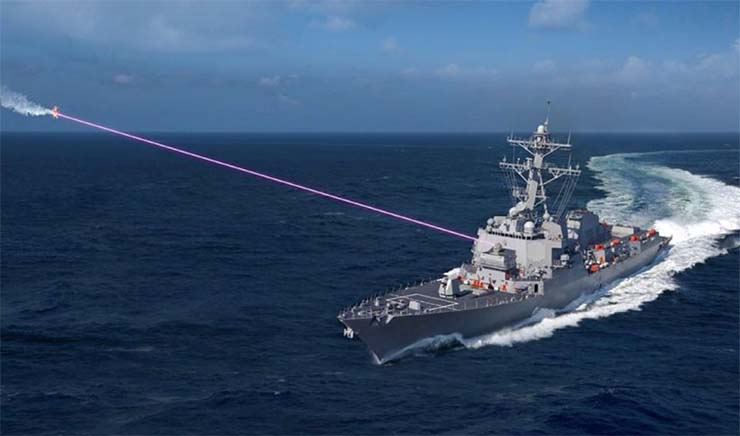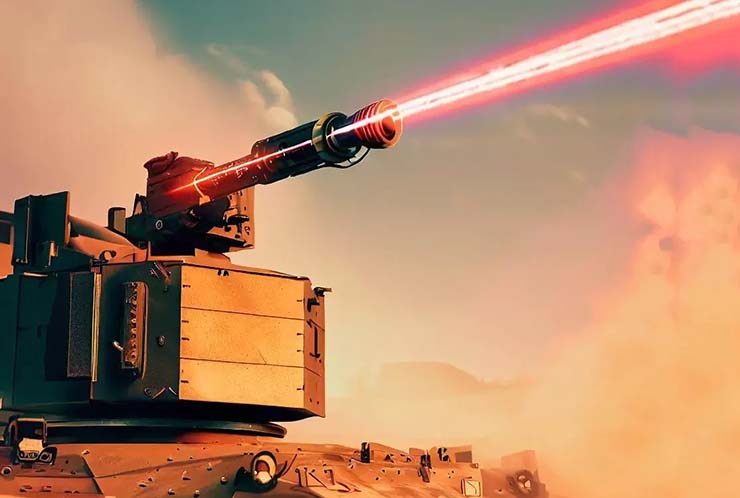
From Sci-Fi to Reality, DRDO is in the advanced stages of developing a high-energy laser weapon system called Durga 2 (Directionally Unrestricted Ray-Gun Array). The Centre for High Energy Systems and Sciences and Laser Science & Technology Centre, two DRDO laboratories, have been working on the project.
It is pertinent to note that, high-energy laser weapons offer a 100 percent kill probability as compared to current anti-aircraft or anti-missile systems. A high-energy laser weapon system (HELWS) is a device that uses a high-powered laser to damage or destroy targets. These systems are still under development, but they have the potential to revolutionise warfare.
HELWS use concentrated beams of light to heat up a target, causing it to melt or vaporise. The power of the laser beam determines the effectiveness of the system. Lower-powered lasers can be used to disable drones or other small vehicles, while high-powered lasers can potentially destroy missiles or even aircraft.
Unlike traditional projectile-based weapons, which rely on the physical force of a projectile to inflict damage, laser weapons utilise highly concentrated beams of light (lasers) to achieve their effects. This difference offers several key advantages:
Unmatched precision: HELWS are very accurate, as the laser beam can be focused on a very small area minimising collateral damage and civilian casualties compared to traditional explosives.
Lightning speed: They are very fast, as the laser beam travels at the speed of light. Light travels at the fastest known speed in the universe, making laser weapons incredibly fast-acting. This makes them ideal for engaging fast-moving targets like drones and missiles.
Cost-effective: Once powered, laser weapons have minimal operating costs compared to traditional weapons needing constant ammunition resupply. They are relatively inexpensive to operate, as they do not require any ammunition.
However, there are also some challenges limiting the range and deployment options of laser weapons. First, they are very sensitive to atmospheric conditions, such as clouds and fog, which can scatter the laser beam and reduce its effectiveness. Second, they require a lot of power to operate, which can be a challenge for mobile applications. Third, there are concerns about the safety of using high-powered lasers, as they could potentially cause serious injury to people or property. This apart Research and development of high-powered laser systems is quite expensive and requires substantial investment.
Despite these challenges, HELWS are a promising new technology that has the potential to change the way wars are fought. Several countries, including the United States, China, and Russia, are currently developing HELWS, and it is likely that these systems will be deployed in the future.
As we look into the future, the successful development and deployment of a credible laser defence system like Durga 2 could deter threats of ballistic missile attacks by potential adversaries and strengthen India’s position as a frontrunner in developing next-generation defence technologies.
HELWS use concentrated beams of light to heat up a target, causing it to melt or vaporise. Lower-powered lasers can be used to disable drones or other small vehicles, while high-powered lasers can potentially destroy missiles or even aircraft
While the primary focus is on missile defence, Durga 2 has the potential to be adapted for other applications, including:
Defence against aerial threats: The system could potentially engage other aerial threats like drones and even fighter jets, offering a layered defence capability.
Non-lethal applications: Lower-powered settings could be used to disable enemy equipment or temporarily blind individuals, providing non-lethal options in specific situations.

The primary purpose of Durga 2 is to neutralise ballistic missiles during their boost and mid-course phases. Durga 2 offers several advantages over traditional missile defence systems:
Hit-to-kill technology: Unlike interceptor missiles that rely on kinetic impact, Durga 2 directly destroys the target missile with a focused laser beam, eliminating the possibility of debris causing collateral damage.
Faster engagement: Lasers travel at the speed of light, offering a quicker response time compared to traditional missiles.
Cost-effective: Once operational, the cost of engaging each target with a laser is significantly lower than launching an interceptor missile.
Once powered, laser weapons have minimal operating costs compared to traditional weapons needing constant ammunition resupply. They are relatively inexpensive to operate, as they do not require any ammunition
DRDO had earlier developed Durga 1, a low-power laser weapon primarily for demonstration. Based on this experience, DRDO is now developing Durga 2, a far more potent and deployable system. DRDO is also understood to have tested a 1-kilowatt laser weapon to destroy a target 250 meters away. The laser reportedly took 36 seconds to create a hole on the target metal sheet.
In 2018, responding to a question in the Parliament the minister of state for defence stated that the DRDO has developed a vehicle-mounted high-power laser-directed energy system for use against drones. India is also reported to have developed a system called KALI, or “kilo ampere linear injector,” a linear electron accelerator for targeting long-range missiles.
Conclusion
Durga 2 represents a significant step forward in India’s quest for developing indigenous and advanced defence technologies. While technical challenges and ethical considerations remain, the potential benefits of this laser weapon system are undeniable. Continued research, development, and responsible international cooperation are crucial for harnessing the potential of Durga 2 and ensuring its contribution to a safer and more secure future.
–The writer is a seasoned media professional with over three decades of experience in print, electronic, and web media. He is presently Editor of Taazakhabar News. The views expressed are of the writer and do not necessarily reflect the views of Raksha Anirveda















